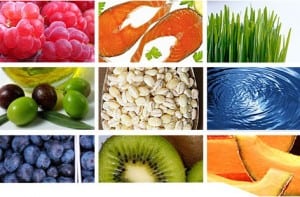
A low-residue diet, sometimes called a restricted-fiber diet, consists of foods that are very low in dietary fiber.
The diet may be low in a number of nutrients, limits the amounts of bowel movements and may help reduce diarrhea. It is intended and important to know that this diet is used for a short time period only then you will transition back to foods with more fiber. Your physician can decide if this diet is right for you.
Purpose of a low residue diet
The diet may be used during a flare up of inflammatory bowel disease (Crohn’s disease, ulcerative colitis), diverticulitis, and irritable bowel syndrome or after intestinal surgery. This diet limits the types of vegetables, grains and fruit you can consume. Some of the food that is allowed is white rice, white bread, white pasta, eggs, meat and baked goods made with refined flour like saltines.
| Avoid | Acceptable |
| Nuts, seeds, coconut and dried fruit | Fish, poultry, ham, bacon, lunchmeat, shellfish and tender meat |
| Whole grains like bulgur, barley and brown rice, bran, popcorn and wheat germ | Eggs, tofu and creamy peanut butterBananas, melons, canned peaches and applesauceWell-cooked or canned carrots, green beans and potatoesPlain tomato sauceVegetable and fruit juices |
| Dried beans, lentils, baked beans and lima beans | White rice and pasta, hot and cold cereal, if they have less than 2 grams of fiber per serving. |
| Granola, popcorn, oatmeal and shredded wheat | Dairy products (if tolerated), butter, margarine, oils and salad dressings |
| Chunky peanut butter, deep fried or spicy food | Baked goods that are made with refined flour like bread, pancakes, bagels, saltines and graham crackers |
References
Mayo Clinic. 2023. Low Fiber Diet Do’s and Don’ts. https://www.mayoclinic.org/healthy-lifestyle/nutrition-and-healthy-eating/in-depth/low-fiber-diet/art-20048511
National Institutes of Health. MedlinePlus. 2022. Low-Fiber Diet. https://medlineplus.gov/ency/patientinstructions/000200.htm


